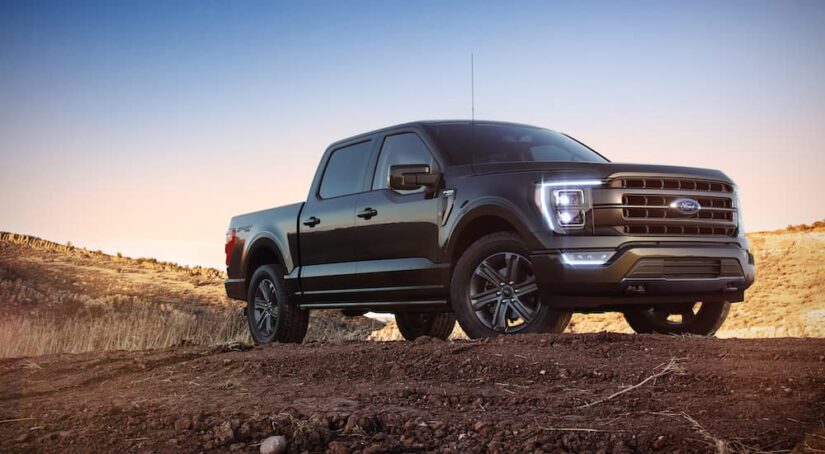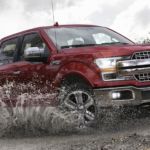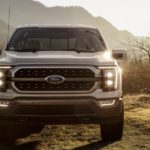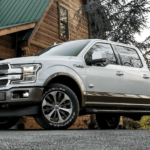The auto industry is driven by competition between manufacturers, which means if you are in the market for a new pickup truck, then you have plenty of options: from light-duty, to off-road focused, and even heavy-duty monsters. Therefore, it is reasonable for you to take your time to shop the market and consider all of your options when looking for an exceptional full-size truck before you settle on one particular make and model. But it is difficult to consider the 2023 Ford F-150 vs 2023 Toyota Tundra without immediately finding faults in Toyota’s offering compared to what Ford delivers.
That’s not to say that the Tundra is a bad vehicle. As I mentioned, drivers have a variety of options, and it’s never a bad idea to explore all of them to ensure you get the right truck for your needs. After all, buying a vehicle is a big investment, so it’s important to choose wisely. That being said, there are a few compelling reasons why you might choose the 2023 Ford F-150 over the Toyota Tundra. Whether you’re a major proponent of customizing your truck, or you’re looking for a pickup that comes equipped with all the right things to help you get your job done, the 2023 F-150 makes a lot of sense for a lot of drivers.
Considering Power and Performance
Pickups are often considered “work and play” vehicles. That’s not to say that you can’t do your daily driving in a truck, but many drivers choose a pickup specifically because of its ability to tow heavy loads or carry a large amount of awkwardly-shaped payload in its bed. The 2023 F-150 is prepared to tow up to 14,000 lbs and offers a best-in-class payload maximum of 3,315 lbs. In contrast, the Toyota Tundra maxes out at 12,000 lbs of towing and 1,940 lbs of payload. Such a significant difference could make the choice between these two vehicles straightforward for you, depending on your needs.
Bear in mind that both the F-150 and Tundra have different load maximums based on the trim, configuration, and engine chosen. Speaking of the engine, Ford offers the 2023 F-150 with a choice of five different engines, giving you plenty of power to enjoy. These include:
- 3.3L TI-VCT V6 with 290 hp and 265 lb-ft of torque
- 2.7L Ecoboost V6 with 325 hp and 400 lb-ft of torque
- 5.0L TI-VCT V8 with 400 hp and 410 lb-ft of torque
- 3.5L Ecoboost Turbo V6 with 400 hp and 500 lb-ft of torque
- 3.5L Powerboost Full Hybrid V6 with 430 hp and 570 lb-ft of torque
The Toyota Tundra, on the other hand, has only two engines on offer, both of which are a 3.4L i-FORCE Twin-Turbocharged V6; which is tuned to deliver up to 389 hp. If you want greater power in the Tundra, then there is an i-FORCE MAX hybrid that pairs the standard 3.4L V6 with an electric motor to provide 437 hp and 583 lb-ft of torque. You can see that this is a completely respectable amount of power for the Toyota pickup, but horsepower isn’t everything.
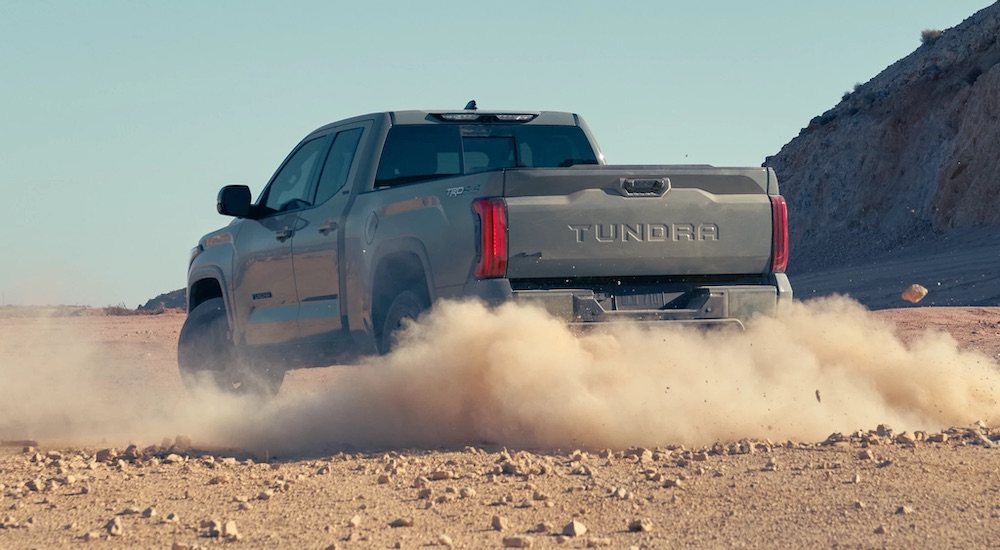
Interestingly, Ford’s hybrid powertrain delivers less horsepower and torque than what Toyota offers, yet it still provides greater towing capability, offering loads up to 12,700 lbs a lift to their next destination. This is where the incredible experience of Ford’s engineers comes into play as they can perfectly pair the power of their engines with bold designs. Not only is the F-150 remarkably fun to drive, but it can help you get more work done too.
The Importance of Having a “Just Right” Truck
Truck drivers are known for having strong opinions about their pickups. That’s because a purpose-built vehicle needs to have all the right functions for the job it’s being asked to do. In many cases, that goes beyond basic power or performance, and reflects duties like being able to work in sand and mud, push up and down hills with a heavy payload, and serve as a mobile office for a group of professionals. Pickups have a lot of job duties to perform as assigned, so drivers need to be positive they’ve selected a truck that meets all of their needs.
As a result of these demands, automotive manufacturers have responded to the sheer diversity of driver needs with more options and customization features. Ford is one such manufacturer; the 2023 F-150 is offered in your choice of XL, XLT, Lariat, King Ranch, Platinum, Limited, Tremor, and Raptor trims. This can seem a bit overwhelming at first, but it gives you a lot of options to get exactly what you need.
Those last two choices are off-road-ready vehicles, with features like standard 4×4 with Rock Crawl Drive Modes, off-road-tuned shocks, and skid plates. The Raptor comes equipped with a full range of off-road tools, devices, and engineering, making it nearly untouchable as the reigning monarch of the trail. Furthermore, if you want a few off-road features without needing the entire Raptor experience, then the FX4 Off-Road Package is available for many trims, providing an electronic locking rear axle, skid plates, rear off-road shocks and suspension, and Rock Crawl mode.
The Toyota Tundra is offered in several trims as well: SR, SR5, Limited, Platinum, 1794 Edition, TRD Pro, and Capstone. The TRD Pro is the only trim that naturally comes equipped with off-road chops; there is an available TRD Off-Road Package that adds helpful features like an electronically locking rear differential, but it lacks any additional drive modes. If having a choice is a priority for you, then the Ford F-150 offers you the most options for customization, including various degrees of all-terrain capability. The Tundra has a good variety of options, but none of them quite reach the same level of all-purpose ruggedness as the F-150.
Thoughtful Touches Throughout the Interior
Many pickup drivers spend their entire day in their trucks, making interior details surprisingly important in these models. Anyone who has spent considerable time in a truck can tell you there is often a discernible difference between what a feature is designed for, and how it’s used. For example, the compartments designed to hold CDs way back when can make a fantastic resting place for a sandwich between bites.
Because of this, drivers appreciate the little things that make sense, like the fold-flat gear shift and console fold-out desk that are available in the F-150, which allow you to turn your front seat into an office space. The under-seat space can be turned into a lockable safe for valuable cargo like tools and personal items. To its credit, the Toyota Tundra features a giant center console, which offers plenty of storage opportunities. Numerous USB ports within the console allow you to operate and charge a variety of devices. Plus the Tundra’s rear seats also flip upwards for under-seat storage, but all of these features still fall short of what Ford offers.
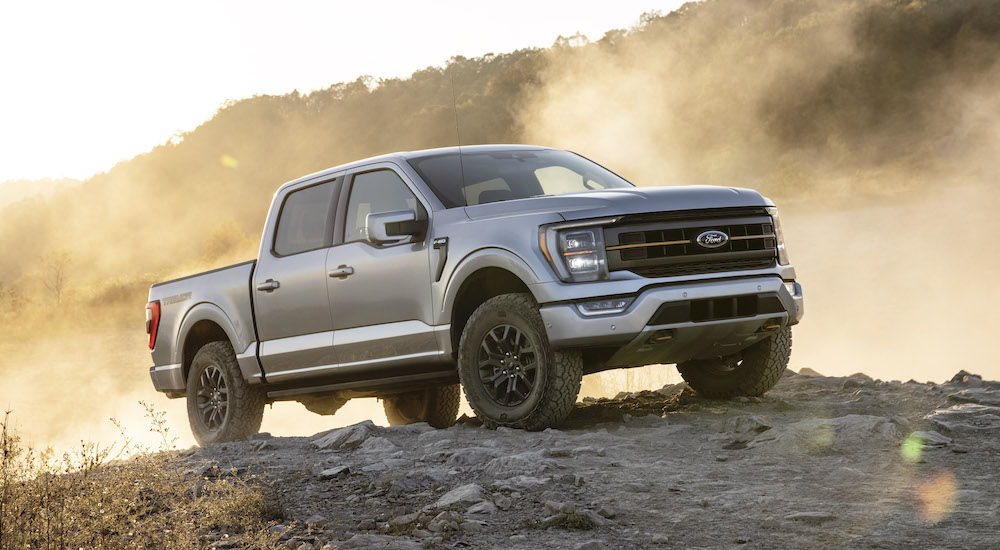
Choosing the 2023 Ford F-150 or the Toyota Tundra
It’s possible that accommodating large and heavy loads isn’t particularly important to you. Not all of us use our pickup trucks for stowing and towing, after all. Similarly, you might not have any particularly strong feelings about trims and features, and you may never stray from the pavement. In that case, you could be perfectly happy with either the F-150 or the Tundra.
But for many truck drivers, there are certain lines in the sand (mud, gravel, or snow) that cannot be swept away. If you regularly tow more than 12,000 pounds, then a Tundra simply isn’t going to cut it for you. And if you’re the type who wants the freedom to take the muddiest road home, a Tundra may not provide the off-road capability that you need. Both the Ford F-150 and Toyota Tundra are good and worthy pickup trucks with devoted fans and drivers. But if you have a specific set of needs for your next truck, then you should choose the option that’s purposefully designed to handle those needs. For many of us, that option is the Ford F-150 with a design that’s ideal for serious work and serious play.
